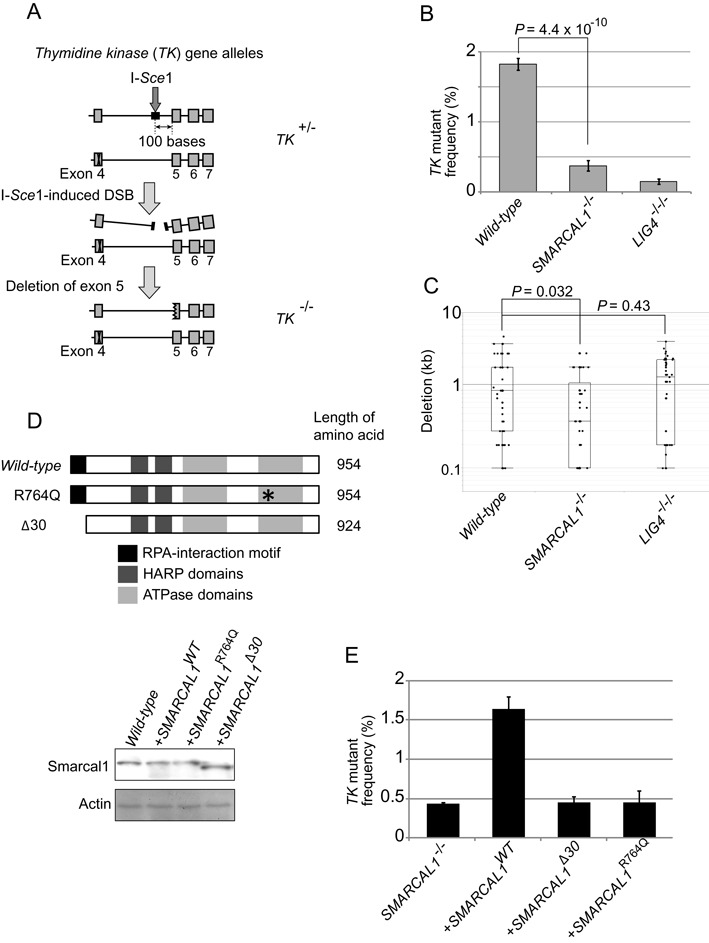Figure 5.

The fidelity of end-joining in SMARCAL1 mutant cells. (A) Schematic diagram showing DSB-repair events that repair I-Sce1-induced DSBs in the endogenous thymidine kinase (TK) locus. TK+/− cells carry an I-Sce1 site in intronic sequences of the wild-type TK allele and a mutation in exon4 of the mutant TK allele. DSB repair associated with deletion in exon5 coding sequences would yield TK−/− clones from TK+/− cells. The number of TK−/− clones was measured by counting the number of trifluorothymidine (TFT)-resistant colonies. (B) Histogram representing the frequency of DSB-repair events (y-axis) in the indicated genotypes (x-axis). Error bars indicate SD of more than three independent experiments. P-value was calculated by Student's t-test. (C) Box plot representing the length of nucleotide deletion (y-axis) in the indicated genotypes (x-axis). PCR was performed from genomic DNA isolated from at least 50 TFT-resistant clones of each genotype, as shown in Supplementary Figure S6. (D) Schematic representation of the structure of wild-type, R764Q and Δ30 Smarcal1 proteins. SMARCAL1−/− TK6 cells were reconstituted with SMARCAL1WT, SMARCAL1Δ30 or SMARCAL1R764Q transgene. Western blot analysis for the expression of individual transgenes in SMARCAL1−/− cells. β-actin was used as a loading control. (E) Histogram representing the frequency of TFT-resistant colonies (y-axis) in the indicated genotypes (x-axis). Error bars indicate SD of more than three independent experiments.
